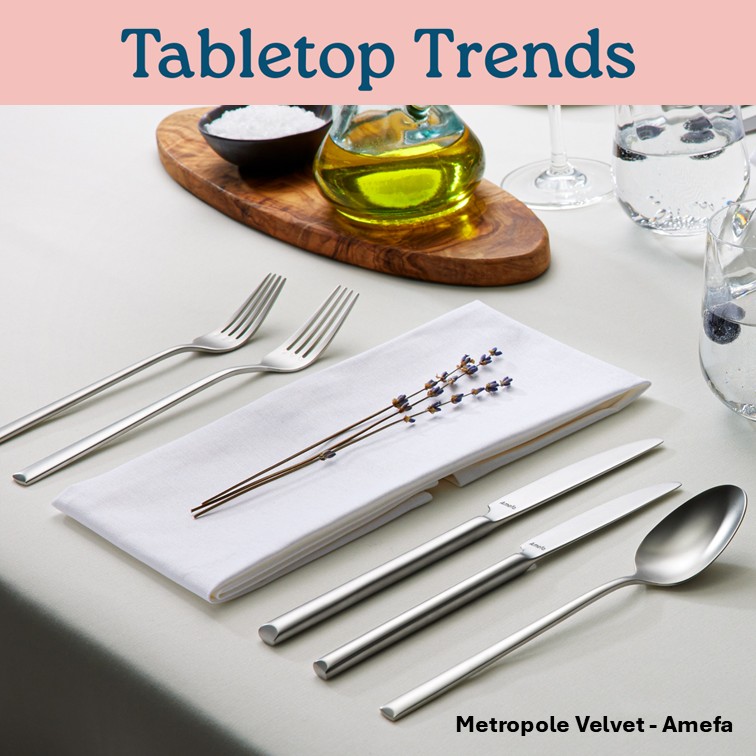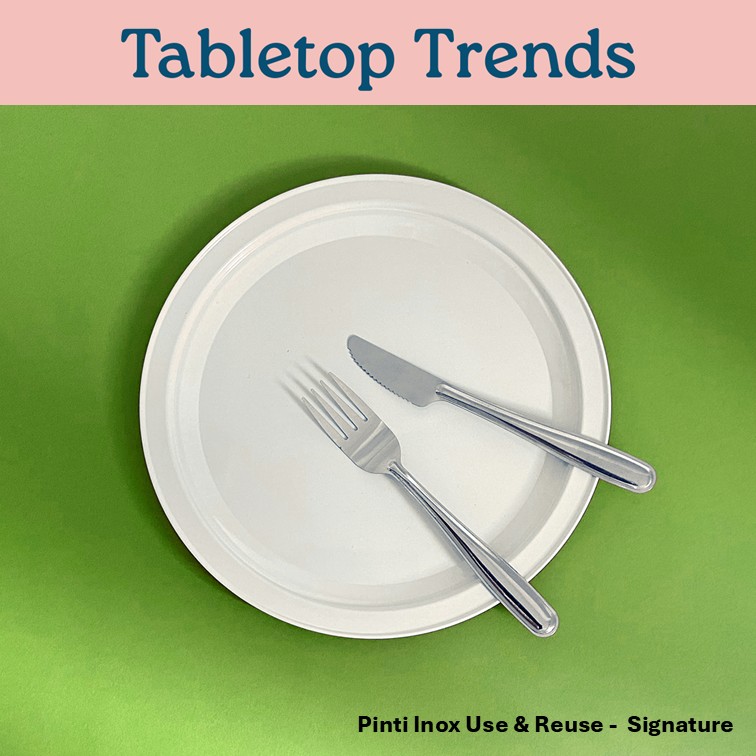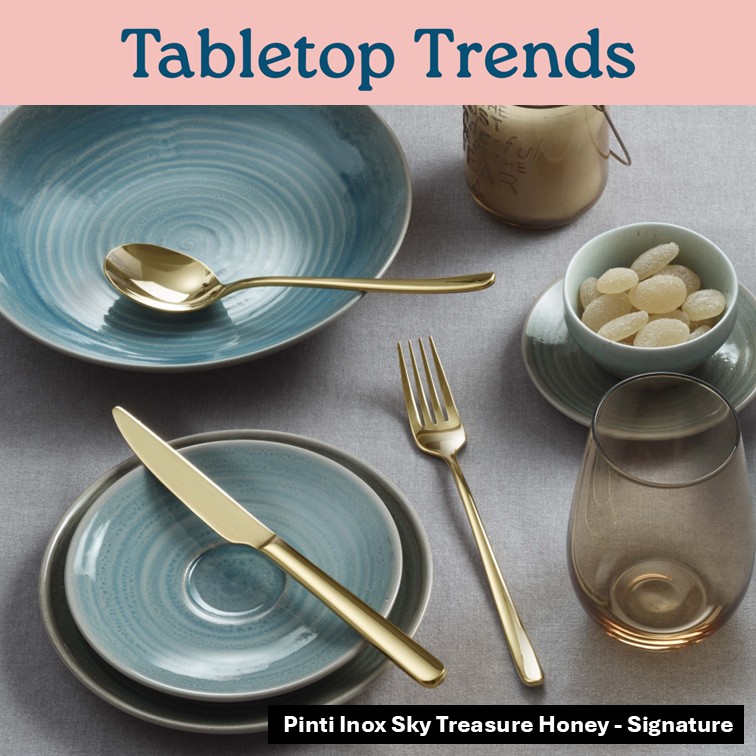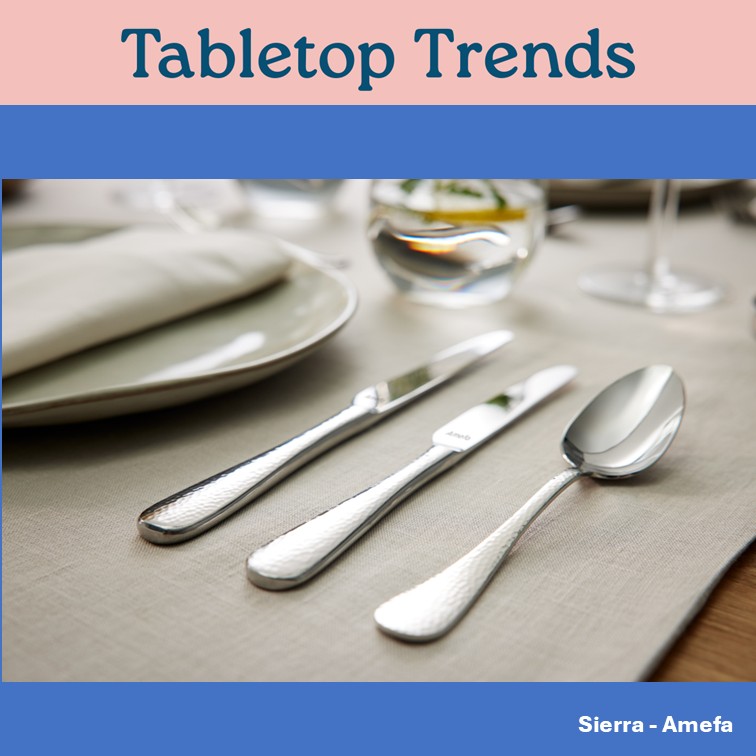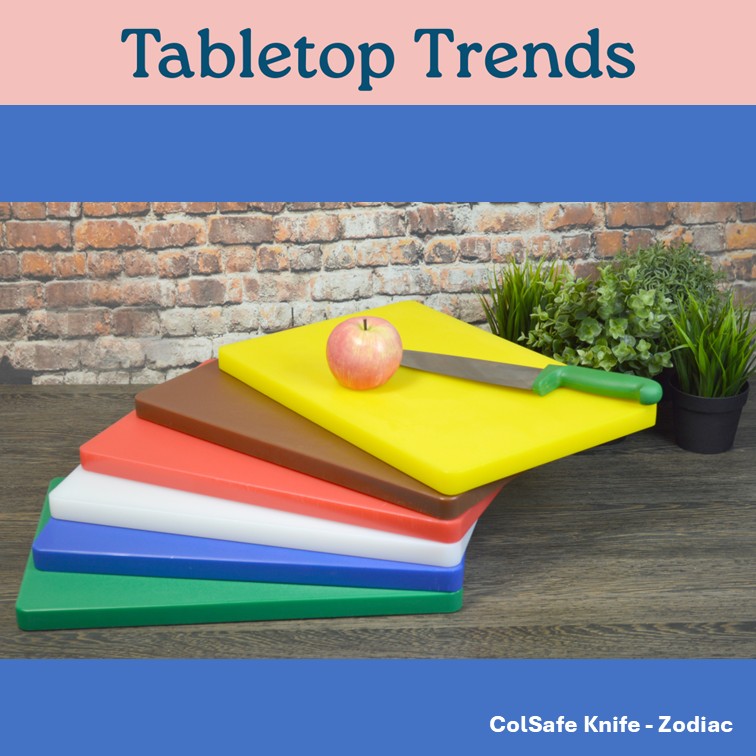Tabletop Trends: Cutlery culture: style, substance and sustainability
In the last few years there have been big changes in the variety and types of cutlery. The huge increase in availability of different colours and finishes – as highlighted at the LET Forum – has given restaurateurs the opportunity to use cutlery to really make a statement on the tabletop.
From visual appeal to a comfortable weight, more and more operators are turning to high-end cutlery to offer customers a premium and memorable experience. Durability and longevity are increasingly important factors – operators are looking for cutlery that can withstand the rigours of commercial life. Having said that, value is always going to be in the buying mix, with that not-so-easy balance between cost and quality.
The demand for striking tabletop settings has operators looking to add a pop of colour or align presentation with their branding. Consequently one of the key cutlery trends is colour – not just the PVD coating on stainless steel to create finishes such as black, gold and copper, but also the various materials used to create coloured handles.
Customers will often ask about the lifespan of coloured cutlery, as there is a fear that the coating will come off in the dishwasher and may scratch. Dealers should check that the supplier is offering a solid guarantee.
Another cutlery trend is the non-mirror finish. At one point we all thought the popularity of matt finishes such as stonewash and satin would be a flash in the pan BUT that was assuming that the matt fashion was just that – fashion. The staff shortages crisis has pushed a key matt-finish benefit much higher up the agenda, and that’s the fact that it takes less looking after than mirrored, and hides blemishes, such as fingerprints, water marks and scratches. Which means matt is lower maintenance, with no need for polishing, so it’s less time consuming to get back into service.
Which isn’t to say classic mirrored finishes aren’t popular – they are still the big sellers, it’s just that matt is doing rather better than anyone anticipated.
There’s a growing trend in handle patterns, such hammered finishes, particularly across fine dining, as their tactile nature can bring a new dimension to the dining experience.
Another trend is an interest in ergonomics and comfort, particularly for frequently used items. The way a piece handles and feels can make a huge impression on consumers. Balance and weight contribute to the user experience.
Cutlery Factcheck…
It’s really important that operators are paired with cutlery that is fit for their business needs, so selecting the right finish is really important. Here are some areas to consider:
- High quality stainless steel will last longer and resist corrosion.
- Rinse cutlery immediate after use to prevent food residue drying and staining.
- Use the correct dishwasher detergents and avoid harsh acidic chemicals for cleaning.
- Don’t leave cutlery sitting in a humid atmosphere, such as a dishwasher after the wash cycle has finished.
- Separate knives from other cutlery pieces in the dishwasher – that’s because they may use a different grade of steel, and if different pieces touch it may cause corrosion.
- Drying cutlery with a soft cloth after a machine wash can prevent water spots and staining.
- Polish mirror finish cutlery occasionally to maintain the shine.
- The gauge of the cutlery is important for the hand feel and resistance to bending.
- Consider whether the design of the cutlery fits the site’s aesthetics, and how practical it is in terms of cleaning and storage.
Although practicality and cost-effectiveness remain key considerations for cutlery buyers. sustainability is high up the agenda. Buyers are asking questions about the materials used, where steel comes from, where it’s manufactured, how the manufacturing or transport shipping footprint is managed, the embodied carbon and so on. There’s interest in recycled or recyclable options, and in longevity, as a longer lifespan is seen as a sustainable option. Meanwhile some manufacturers are adding light weight stainless steel cutlery to their portfolio as a practical alternative to single-use plastic – it can be reused many times and recycled.
The focus on sustainability has led to a growing interest in earthy and rustic tones, and the look and feel of stonewashed collections fit this aesthetic particularly well, helping restaurants to underline their green aspirations.
Thanks to Amefa, Signature and Zodiac for help with this article. Here are a selection of these company’s star products (you’ll find pictures of some of them in the carousel above)
Amefa: Siera, with a hammered finish; and Metropole Velvet, which has a sandblasted finish.
Signature: Use & Reuse can be washed and reused and is 100% recyclable; Sky Treasure’s durable PVD coating comes in a range of colours, including honey.
Zodiac: ColSafe Colour Coded Chef Knives help prevent cross-contamination; Oslo and Rio are our bestselling cutlery ranges, offering quality and durability.
To find out about attending the 2026 LET Forum contact FEA through fea.org.uk or #FEAuk.
Don't miss out on Tabletop Trends - Sign-up to our mailing list
This article is part of Tabletop Trends - FEA's quarterly light equipment and tableware sector newsletter.
Tabletop Trends is produced and distributed by the Foodservice Equipment Association, the UK's largest independent foodservice equipment trade association. All suppliers listed in this article are FEA members. A full list of Light Equipment and Table suppliers can be found on our Meet Our Members section - simply select Light Equipment / Food Prep from the Product Type drop down menu
Contact the FEA
Rotherwick House, 3 Thomas More Street, St. Katharine Docks, London, E1W 1YZ
020 7793 3030 | enquiries@fea.org.uk

